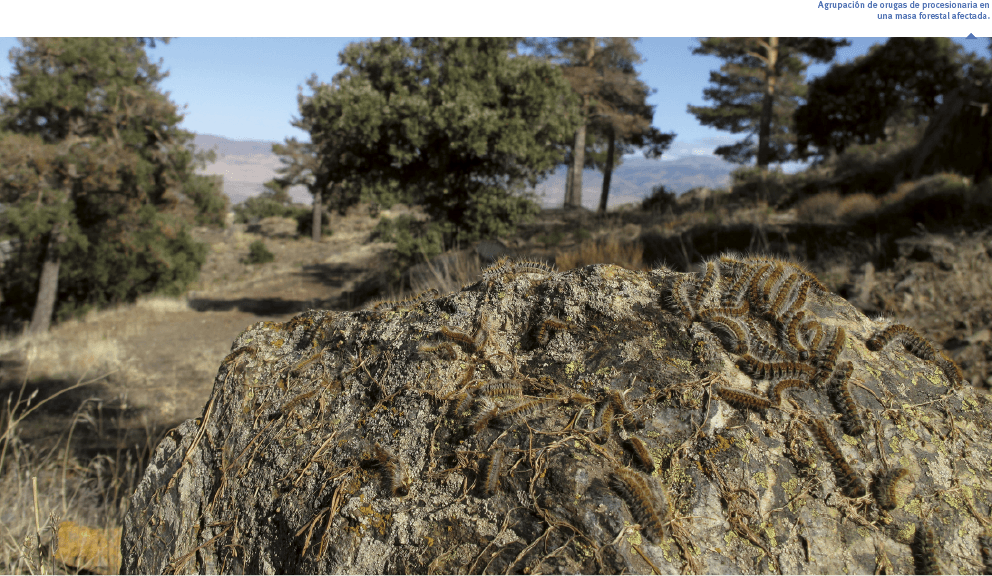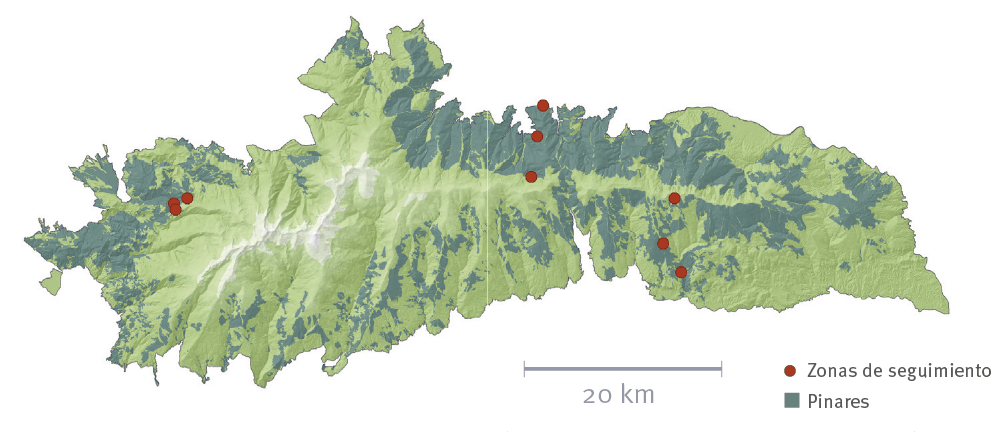Aims
The main aim of the monitoring of the pine processionary moth (Thaumetopoea pityocampa) is to observe possible variations in it biological cycle, specifically in relation to its phenology and its population dynamics. This lepidopteran is considered the main defoliator in the Mediterranean forest and has very particular microclimatic demands for its development.

Method and effort
A monitoring system has been established to coincide with the key times of the life cycle of the pine processionary, such as hatching of the caterpillars, the procession and burrowing into the soil, and emergence as adults, all processes linked to specific conditions of temperature and moisture and thus sensitive to climatic variations.
The forest structure is determinant in the population dynamics of this social insect. Thus, three sampling regions were chosen within the Park that are representative in terms of sensitivity of the processionary: orientation, elevation, and dominant forest species. In each region, three sampling zones were established, seeking to cover the entire altitudinal range in which the pine forest is distributed and establishing a minimum difference of 200 m between elevations.
The summer monitoring spans from the appearance of the adult until the hatching of the egg masses (July to September) and consists of setting one pheromone trap per elevation and monitoring 30 egg masses in the needles of each of the study zones.

Periodicity
The monitoring is annual, being divided into winter (November/January to March/April, depending on the year) and summer (July to September). In both periods the sampling frequency is 2-3 times per week.
References
Démolin, G. 1969. Bioecología de la procesionaria del pino Thaumetopoea pityocampa Schiff. Incidencia de los factores climáticos. Boletín del servicio de Plagas forestales, 12:9-24.
Hódar, J.A., Zamora, R., Castro, J. y Baraza, E., 2003. Pine processionary caterpillar Thaumetopoea pityocampa as a new threat for relict Mediterranean Scots pine under climatic warming. Biol. Conserv., 110: 123-129.
Hódar, J.A. y Zamora, R. 2004. Herbivory and climatic warming: A Mediterranean outbreaking caterpillar attacks a relict, boreal pine species. Biodivers. Conserv., 13: 493-500.
Sánchez Peña, E., González Rosa, E. y Martínez de Saavedra, J. 2006. La procesionaria del pino: Análisis de su posible uso como bioindicador del cambio climático. Puesta en marcha de un mecanismo de seguimiento de las expansiones en la distribución geográfica de este lepidóptero defoliador. Pp.: 79-92. En: VII Jornadas sobre Recerca al Parc Nacional d’Aigüestortes i Estany de Sant Maurici Boí (Alta Ribagorda).